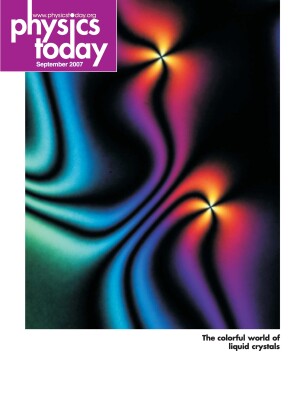Obtaining a complete genome from a single cell
DOI: 10.1063/1.4796591
The human mouth teems with some 700 different species of bacteria. But except for the few microbes responsible for gum disease, tooth decay, and bad breath, the vast majority remain unexplored. Indeed, because most microbes are resistant to growth outside their own complex ecosystems, fewer than 1% of Earth’s species of bacteria have been cultured. A group of bioengineers and medical researchers led by Stanford University’s Stephen Quake has now developed a microfluidic device that circumvents the need to culture cells at all and avoids contamination from stray DNA in solution. The device, shown here, is a dense network of tiny pipes, valves, pumps, and reaction chambers lithographically patterned on a rubber microchip. In a proof-of-principle experiment, the researchers analyzed a single cell from a rare phylum of bacteria (TM7) that thrives between teeth and gums. In one of its eight parallel processors (the ninth is a control), the chip isolated a microbial cell, opened it to extract the DNA, and then mixed that DNA with nano-liters of reagents to make millions of copies. Off chip, the researchers then successfully sequenced most of the genome. They expect the approach to offer insight into Earth’s tremendous microbial diversity. (Y. Marcy et al., Proc. Natl. Acad. Sci. USA 104 , 11889, 2007 .)

